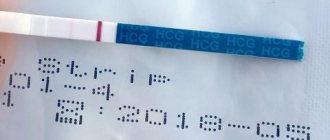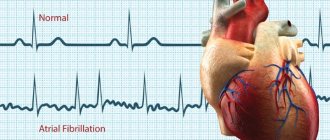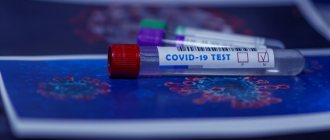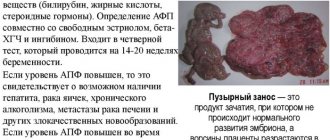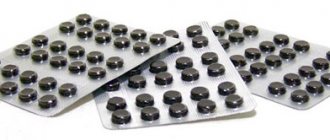General blood tests
09/23/201909/25/2019 Chernenko A. L. 1069 Views many, general analyzes
This article discusses the INR blood test: what it is and how much the indicator should be.
For laboratory assessment of the quality of the external blood coagulation pathway, the study of prothrombin time (PTT) and its derivatives is used:
- prothrombin index (PTI);
- international normalized ratio (INR indicator).
These indicators are used when assessing the state of the blood coagulation system, monitoring the effectiveness of treatment with warfarin drugs (analysis of INR during warfarin therapy is a mandatory diagnostic method), liver dysfunction, vitamin K deficiency, etc.
Analysis for prothrombin time and its derivatives (blood test for INR and prothrombin index) allows you to assess the quality and activity of the first, second, fifth, seventh and tenth blood coagulation factors. To obtain more complete information, this study is often performed in combination with activated partial thromboplastin time (aPTT).
- 1 What is blood clotting?
- 2 INR blood test - what is it and how long should it be?
- 3 When is a blood test for INR indicated?
- 4 How to prepare for a blood test for INR?
- 5 Table of INR norms for women by age
- 6 Norm INR in the blood of men
- 7 INR norm when taking warfarin
- 8 What does it mean if the INR is elevated?
- 9 Reduced prothrombin
- 10 Foods that increase INR when taking warfarin
What is an INR blood test?
INR is not an actual value and is calculated using mathematical equations.
The basis is the PT value (prothrombin time), the normal value of which is considered to be 11-16 seconds, and the thromboplastin sensitivity index (TSI), which is the active developing reagent. The result of the INR readings can be presented as a mathematical formula (INR = PVMICH).
In most cases, such an analysis is prescribed to people taking anticoagulants who need constant and timely monitoring of blood clotting. As a result of such an analysis and correct calculation, specialists are able to obtain an accurate idea of the level of plasma in the blood, excluding errors and any external factors. Regardless of which laboratory the blood test was performed in, the results will be valid in medical institutions around the world and will be identical when deciphered. Such a blood test will allow specialists to select the required amount of anticoagulants and fully control the treatment process.
Additional examinations
Most often, a coagulogram is prescribed to help INR, but this technique alone is not enough, they use: collecting anamnesis, complaints, physical examination, take a bone marrow puncture if a malignant underlying cause is suspected, do an ultrasound of the digestive organs, conduct an ECG, echo CG, and, if necessary, prescribe consultations with highly specialized specialists.
Diagnostics is the basis of successful therapy, and therefore INR is a popular technique due to its ease of implementation and good diagnostic compatibility with other research methods.
Interpretation of a blood test for INR
INR values will primarily depend on the activity of coagulation factors (specific blood proteins), which are formed in the liver and represent “targets” for the action of anticoagulants (for example, Dabigatran, Warfarin). Therefore, if a patient uses anticoagulants, he should periodically take a blood test for INR.
Experts identify certain indications for prescribing a blood test for INR, and the norms for this characteristic will differ in different cases.
- Examination of the patient before surgery. Normally, the INR ranges from 0.85 to 1.25.
- Warfarin therapy for chronic atrial fibrillation. The INR norm is 2.0-3.0.
- Treatment of pulmonary embolism. The normal INR is from 2.0 to 3.0.
- For some heart valve defects, the normal blood test for INR is between 2.0 and 3.0.
- When treating venous thrombosis, the normal INR value is 2.0-3.0.
- For vascular diseases, this figure is 3.0-4.5.
Going beyond these indicators is extremely undesirable, and in some cases even dangerous. An increase in INR when taking Warfarin and its analogues indicates a decrease in coagulation, which is fraught with various bleedings: both external and internal (gastric, abdominal, uterine).
If INR values exceed the upper limits of normal, treatment requires a reduction in the dose of indirect anticoagulants, and if its values are too low, it suggests an increase in the dosage of these drugs due to the ineffectiveness of treatment.
According to the transcript of this study, an INR value above 1.25 (in patients not taking anticoagulants) is extremely dangerous due to the risk of developing a number of pathologies, in particular:
- congenital diseases of the blood coagulation system;
- liver diseases;
- disorders of lipid absorption in the intestine;
- problems with the passage of bile from the liver into the duodenum;
- myocardial infarction;
- pre-infarction condition;
- malignant tumors;
- polycythemia;
- hemorrhagic disease in newborns.
If a patient's INR value exceeds 6 units, he requires urgent hospitalization due to a significant risk of bleeding of various locations. This condition is extremely dangerous if the patient has certain concomitant diseases: inflammatory or peptic ulcers of the stomach and intestines, kidney pathologies, arterial hypertension.
A decrease in the INR level in a blood test indicates the following pathologies and conditions:
- vitamin K deficiency in the body;
- congenital or acquired prothrombin deficiency;
- massive entry into the bloodstream of tissue thromboplastin during injury or necrosis;
- increased blood clotting during pregnancy or after childbirth.
Decreased prothrombin
A reduced level of prothrombin can be recorded when:
- hereditary or acquired deficiencies of the first, second, fifth, seventh, tenth blood coagulation factors;
- idiopathic familial hypoprothrombinemia;
- acquired or hereditary hypofibrinogenemia;
- vitamin K deficiency (without vitamin K, the second, seventh, tenth blood clotting factors are not formed in hepatocyte cells);
- vitamin K deficiency in the mother (hemorrhagic diathesis is observed in newborns);
- taking certain medications: vitamin K antagonists (anticoagulants - phenylin, coumarin), anabolic steroids, clofibrate, glucagon, thyroxine, indomethacin, neomycin, oxyphenbutazone, salicylates, heparin, urokinase/streptokinase.
Low or high INR
A blood test to control the INR level can be performed both in the treatment room and at home (to do this, it is enough to purchase a device for measuring INR). The analysis result should be deciphered by a doctor who will adjust the dose of anticoagulants, if used. If the INR increases (the risk of bleeding increases), the dose of anticoagulants should be reduced. And as a result of a decrease in this indicator, blood clots may form, so the dose should be increased.
Other reasons for prescribing a blood test to determine the INR level may be:
- nosebleeds;
- bleeding gums;
- unreasonable occurrence of bruises;
- blood in urine;
- heavy, prolonged menstruation in women;
- traces of blood in sputum or vomiting;
- blood in stool;
- prolonged bleeding from abrasions or cuts;
- change of climate, lifestyle, diet.
If, according to the results of the analysis, the INR deviates upward, this indicates that blood clotting is increased, and accordingly the risk of diseases and pathologies is increased:
- myocardial infarction;
- liver diseases;
- congenital diseases of the circulatory system;
- pre-infarction condition;
- polycythemia;
- malignant tumors;
- impaired absorption of fats in the intestine;
- hemorrhagic disease in infants;
- problems with bile entering the duodenum from the liver.
If the INR is reduced, this also indicates problems in the body:
- blood clotting during pregnancy, as well as after delivery, is increased;
- prothrombin deficiency;
- lack of vitamin K;
- the amount of thromboplastin in the blood is increased (as a result of a cut or anesthesia).
Some factors may distort the results of the study when decoding:
- the blood tube was not filled enough and was mixed with the anticoagulant;
- destruction of red blood cells as a result of improper vein puncture;
- side effects of certain drugs (antibiotics, anabolics, steroids);
- the standard for keeping the sample at +4 °C was violated;
- a sample was taken not of venous, but of capillary blood (tissue thromboplastin was included in the sample).
It is worth emphasizing once again that timely control of INR levels can protect against various pathologies and complications, and also reduces the risk of complications during anticoagulant therapy. This test is recommended by WHO as one of the most effective and reliable for determining the state of blood clotting.
Features of treatment
Any differences from the above indicators pose a great danger to the patient’s health, and therefore must be adjusted by a doctor on an individual basis. After a thorough diagnosis, the doctor selects medications that can increase or decrease blood clotting. It is very important not to buy medications for yourself and not to use prescriptions that were prescribed to your friends with a similar diagnosis. Those medications that work for them can significantly harm you.
You can adjust your INR levels by normalizing your diet. With an elevated INR, the patient needs to reduce the amount of foods that contain vitamin K, in particular:
- fish;
- liver;
- spinach;
- cabbage;
- cauliflower;
- broccoli;
- Brussels sprouts.
Try not to eat a lot of green vegetables and fresh fruits at one time. If the INR levels are low, then the patient should do exactly the opposite, that is, consume as many of the above products as possible. Vitamin K leads to increased blood clotting. By correctly forming a regular menu, you can constantly keep your INR normal . Of course, you shouldn’t give up all foods, because it is with them that the body is saturated with vitamins, it is better to keep the food consumed under control.
To avoid unforeseen situations that can cause sudden bleeding, stroke or other vascular pathologies, undergo preventive examinations with a doctor if you have a hereditary predisposition to increased INR, as well as diseases of the circulatory system. The INR blood test means that you now know this, and you will no longer be at a loss if you are prescribed it. Theoretically savvy means armed, this statement in this case couldn’t come at a better time.
Source: 1diagnos.ru
INR norms
The patient's coagulogram is a very individual indicator. Therefore, for each specific case, the norm may vary. With a normal index of 2-3, one patient is recommended to maintain the index closer to 2, while for another patient the optimal index will be 3.
Recommended standards:
- from 0.8 to 1.15 – for persons who do not take anticoagulants;
- from 1.5 to 2 – for persons who have been diagnosed with arrhythmia and are undergoing prevention of blood clots;
- from 2 to 3 – for people after surgery, for the prevention of heart valve diseases, for the prevention of complications after a heart attack, for the treatment of deep vein thrombosis;
- from 3 to 4 – for persons undergoing treatment for diseases of the main arteries;
- from 4 to 4.5 – for persons who have undergone surgery with the introduction of cardiac prostheses.
INR norm in women and men
A blood test for INR is normal if the above indicators correspond to both males and females. The only difference may be the indicators for girls who take contraceptives. Elevated levels may also occur during pregnancy.
During this period, the body undergoes significant changes, which can cause jumps in the indicator. Therefore, it is recommended to carry out INR in a woman’s blood every 3 months. An overestimated value is acceptable, however, if the indicator tends to constantly increase, measures must be taken, otherwise there is a risk of premature birth and the threat of miscarriage.
How to lower the INR index
An increased level of Warfarin in the blood has a number of consequences if the diet is not followed or the drug dosage is incorrect. The patient is prescribed a special diet to restore the balance of the blood vessels.
The table will provide a list of recommended products:
| Product | Condition |
| Meat | low fat composition |
| Fruits | high sugar content |
| Confectionery | low fat composition |
| Cereal porridge | |
| Flour products | whole wheat flour |
| Bread or crispbread | stale or dried out |
| Vegetables | |
| Baked potatoes | without adding vegetable oil |
| Boiled egg | no more than 1 per day |
| Milk products | no more than 1% fat content |
Analysis transcript
If the INR is elevated, this indicates the possibility of the following pathologies:
- hereditary pathology of the coagulation system;
- improper absorption of fats in the intestines;
- vitamin K deficiency;
- liver diseases;
- side effects from taking indirectly acting drugs.
An overestimated value is dangerous due to the risk of internal and external bleeding. An indicator above 5 is especially critical. The situation is complicated if the INR is higher than normal when diagnosing hypertension, ulcerative lesions of the gastrointestinal tract, and diseases of the urinary system. In this case, the patient requires urgent hospitalization and treatment.
A coagulogram in which an underestimated INR reading is observed indicates the development of the following conditions:
increased antithrombin levels,
side effects from taking diuretics and contraceptives,
abnormal hematocrit level.
A low index indicates increased blood viscosity, which can result in the formation of blood clots in the vessels.
If a low INR is detected in a pregnant woman, this indicates the likelihood of thromboembolic complications. Any violation of the norm of the indicator signals a malfunction in the body, as well as a possibly incorrectly selected dose of medications taken.
How to level up
INR blood test is a series of tests that determine the performance of all vital organs. If the index is low, cardiologists adjust, first of all, the dosage of Warfarin. They are also prescribed a special diet. The main requirement is to avoid foods containing vitamin K, as it helps lower the index.
The largest amount of this vitamin is found in green tea, lettuce, liver, spinach, cauliflower and white cabbage, green peas and brewed black tea. You should reduce your consumption of mayonnaise, apples and cucumbers.
When a doctor prescribes Warfarin, for greater effect, you can consume a number of products that promote an accelerated increase in levels when interacting with the drug. These include fish oil, garlic and red currants.
INR blood test is normal
When this study is carried out, the assessment is guided by one general rule: the higher the indicator, the more liquid the plasma becomes. The blood INR norm is always within the value of 1. Deviation indicates some pathologies and incorrect dosage of drugs. The absence of an INR norm may indicate:
Increased, taking into account the specific pathology. This indicates an overdose of medications (indirect anticoagulants), which can lead to complications (bleeding). The doctor should reduce the dose. If it is reduced, then the therapy does not have the desired effect, blood thinning does not occur, which can lead to the development of vascular thrombosis. In this case, the dosage should be increased.
INR is the norm in women
In an adult and healthy person, the test will always be between 0.7 and 1.3. The INR norm for women is no different from that for men and will also fluctuate around one. The only difference between the sexes is that clotting control must be very carefully carried out during pregnancy. During this period, the girl’s body undergoes enormous changes. Plasma should be donated for testing 3 times (1 in each trimester).
In pregnant women, this indicator is slightly increased, which is not regarded as a deviation from the normal value. If the INR value increases excessively, there is a risk of premature birth and early miscarriage. To confirm and eliminate the error, the girl undergoes another test, after which treatment is prescribed, constant monitoring of clotting before and after childbirth.
Values
The substance is calculated according to the formula:
INR = (patient PT/control PT) MICH,
where PT control means the amount of PT in the blood of a healthy patient
It can be noted that INR is inversely proportional to the duration of the clotting process. The higher the INR, the lower the amount of prothrombin and factors that promote the coagulation process. As INR decreases, prothrombin increases.
Reference values – 0.85-1.15 units. Those taking anticoagulants have increased rates. This is due to the fact that special medications (for example, Heparin) inhibit clotting, the blood becomes “liquid,” which prevents blood clots.
Purpose of the test
The thickness of the blood, or its rheological (flowing) properties, is within normal limits when both systems (coagulation and anticoagulation) work harmoniously and harmoniously, maintaining balance. If one of the systems fails, a person may experience blood clots or increased bleeding.
In this case, the coagulogram reflects the state of the coagulation system, where the key indicator is prothrombin. Based on the state of this protein, the doctor can determine the presence and absence of hemostasis pathology in the patient. The basic coagulogram includes the following indicators:
- PTI - prothrombin index (“Prothrombin index: norm and deviations”);
- prothrombin level according to Quick;
- PTT—prothrombin time;
- the INR indicator is the most accurate and reliable.
In most cases, INR determination is necessary for patients who take indirect anticoagulants for a long time, for example, warfarin. The difficulty in tracking the results of treatment is that these drugs affect only some clotting factors. And only INR can detect these changes and determine improvements in the patient’s condition.
An increase in INR indicates that the patient has a tendency to bleed. Based on this, the dosage of indirect anticoagulants is reduced. If the tests reveal a reduced value, then the risk of blood clots increases. Therefore, the specialist decides to increase the required dose of medication.
High level of clotting
An increase in INR for a person who is not taking medications that affect blood clotting indicates hypocoagulation. Low blood clotting causes the risk of heavy bleeding and large blood loss even with minor physical injuries. An increase in INR can be facilitated by taking various medications. Based on the research results, the doctor carries out treatment, gradually reducing the dose of medication. If the INR test is above 6.0, the patient is subject to immediate emergency hospitalization and a drug that lowers the coagulation rate is prescribed. The INR may be elevated in patients not taking anticoagulants for the following reasons:
- A heart attack or pre-heart attack and other heart diseases can increase the rate.
- Pathological liver damage (cirrhosis, obstruction of bile outflow, etc.)
- Malignant neoplasms
- Increased number of red blood cells in the blood (polycythemia)
- Coagulopathy in infants caused by vitamin K deficiency
- Gastrointestinal diseases
- Side effects of antibacterial agents, antibiotics or hormones
It is especially important to control levels after 50 years. Doctors recommend getting tested every year from the age of 50.
Don't panic
Patients who are sent for INR measurements repeatedly (and constantly) are usually aware of all the intricacies of the analysis, but people who are just starting a “new life” (with indirect anticoagulants) may be scared if they are asked to repeat the study. There should be no panic or premature conclusions in such cases; perhaps the analysis did not work out for reasons beyond the patient’s control. For example, the following factors can distort the indicator values:
- The blood taken from a vein and placed in a test tube with an anticoagulant was not sufficiently mixed (clots had formed somewhere);
- Blood to determine the international normalized ratio was taken from capillary vessels (instead of venous ones), as a result of which tissue thromboplastin entered the sample, which sent the course of events along the wrong path;
- Improper handling of the sample and subsequent hemolysis led to distortion of the study results.
Health workers usually look for their own mistakes, noticing that the results are clearly distorted, and are in no hurry to decipher them.
And finally, it should be noted that INR does not require any special preparation on the part of the patient (diet and lifestyle - as usual), however, medications used for concomitant pathology and that can change the test results should be excluded. However, the doctor will definitely tell you about this.
Display all posts with the tag:
- Analyzes
- Blood clotting
Go to section:
Blood diseases, tests, lymphatic system
Recommendations to SosudInfo readers are given by professional doctors with higher education and specialized work experience.
One of the leading authors of the site will answer your question.
Question answer
Warfarin analogues that do not require INR control
Among indirect anticoagulants, Warfarin is considered the most effective. It slows down blood clotting and increases INR. The only inconvenience of Warfarin is the constant monitoring of the international normalized ratio - once a week if the values are unstable and once every 14 days if the values are normalized. Therefore, the patient gives preference to analogues that do not require constant monitoring of the INR.
The most effective substitutes, Xarelto and Pradaxa, are prescribed for:
- thromboembolism;
- suffered a stroke;
- thrombosis.
The INR indicator helps to study the state of hemostasis and determine the rate of blood clotting. The marker is especially important during anticoagulant therapy. Here, the international normalized ratio allows you to monitor the patient’s condition and adjust drug doses in a timely manner. You can get tested for such a marker either in a specialized laboratory, a clinic at your place of residence, or at home.
Why is determining the INR so important?
The human body has the ability to self-defense, as well as self-healing. One of the devices that provides these capabilities is the hemostasis system, which maintains the blood viscosity necessary to perform the assigned functions.
That is, it controls the clotting process, namely, when bleeding occurs, a chain of chemical reactions is launched aimed at creating blood clots. The latter block the flow of blood - “seal the gaps” in the vessels, as a result of which the bleeding stops.
At the same time, in various laboratories, different thromboplastins (from several manufacturers) were used to perform this blood test - reagents that specifically trigger the clotting process. This often led to different values obtained, which alarmed both doctors and patients themselves.
In order to avoid such inconsistencies, which show different results in several laboratories, and not be tied to the standards adopted in each specific one, the INR indicator was introduced. It cannot be unambiguously called analysis, since at its core it is an ordinary mathematical calculation using a standardized formula.
Reference! The test for determining INR was approved in 1983 by two International Committees - on standardization in hematology and on hemostasis and thrombosis.
The described parameter is calculated using a specially developed formula, including the PTT of the subject and the corresponding MIC coefficient, denoting the international thromboplastin sensitivity index. According to WHO recommendations, the manufacturer must determine the MRI for each batch of reagents by comparison with a generally recognized reference index.
Formula for calculating INR
The use of INR provides the opportunity to compare research results made in different laboratories and at different times without fear for the condition and life of patients. This is the standard ratio used by doctors in all countries.
Therefore, it is the result of calculating the INR that is indispensable when selecting and prescribing the dosage of anticoagulation drugs, transfusion of plasma and its components, as well as other agents. In addition, such a study is necessary to determine the tactics for further treatment of patients with diseases of the hemostatic system.
Determination of the prothrombin time period according to Quick
It is worth noting that some laboratories use more modern methods for assessing coagulation, namely, determining the prothrombin time period according to Quick. In this case, several plasma dilutions are performed. The procedure takes one business day. If the result is urgently needed, some laboratories can provide it within two hours, but for an additional fee.
Where can I decipher the INR norm in a blood test?
Preparation and delivery of analysis
The preparatory process for conducting an INR analysis is not labor-intensive or time-consuming, but in order to get a reliable result, it is necessary to take into account some points. Firstly, you should not donate blood after intense physical activity, physiotherapy, massage, intravenous infusions or intramuscular injections, as this may affect the indicator.
Secondly, if the patient is taking anticoagulants, then the entire daily dose should be consumed no later than 16.00-17.00 on the evening before the examination. We should not forget that blood for INR is taken on an empty stomach, as for general or biochemical analysis, so at least 8 hours must pass after eating. At the same time, it is not correct to go hungry for more than 14 hours - this can also lead to changes in blood composition.
Normal INR values
To perform the analysis, biomaterial is taken from the cubital vein, as for most studies involving blood. Then the resulting liquid is mixed with a preservative in a test tube (usually citrate), the serum is separated from the cell mass and pure plasma is used for the diagnosis itself.
Reference! The action of citrate is aimed at binding calcium ions, which prevents blood clotting.
The laboratory then adds calcium to the serum, which neutralizes the preservative, and thromboplastin. Then the time spent on coagulation of pure serum is determined. This is PTV. Upon completion of all analytical tests, a mathematical calculation of the INR is performed. Some diagnostic laboratories use more modern methods of studying the quality of coagulation, for example, the PTT analysis according to Quick.
When performing it, dilution of the subject's serum biomaterial is carried out several times, and the entire procedure takes no more than one day. If the analysis result is required very quickly, then for an additional fee in some laboratories it is done and deciphered within 1-2 hours.
When anticoagulation therapy using indirect anticoagulation drugs, the patient should undergo an INR test at least once every 15-20 days. And after choosing the appropriate dosage and normalizing the patient’s condition, the analysis will be prescribed less frequently, approximately once every 6-8 weeks.
About the essence of the method
To understand what's what, you need to start from anatomy and physiology. Normally, blood is a liquid substance, connective tissue. As soon as a certain part of the vessel is destroyed, bleeding begins, and platelet cells come into play.
In addition to them, so-called coagulation factors—special proteins—take an active part.
Blood cytological structures accumulate at the site of the lesion and stick together. This process is called platelet aggregation. Normally, the time during which this occurs is from 15 to 20 seconds. Rarely a little more.
The INR study shows exactly how long it takes for liquid connective tissue to coagulate.
A special formula is used to obtain the index.
It looks like this: the rate of blood clotting of the person being examined in the analysis divided by the normalized indicators.
It is worth giving an example:
In a conditional patient, the blood clots in 25 seconds, and the norm is 20 seconds. Accordingly, the INR index will be equal to 25/20 - it turns out to be 1.25.
With a conditionally adequate value of 1 or less. There are exceptions, but they are rare. Blood clots more slowly and the process takes longer. It's too runny. It is in this vein that the issue is addressed.
At its core, an INR test is a coagulogram. An integral part of the study of blood clotting.
INR norm and deviations from it
The international normalized ratio is used as a laboratory parameter assessing the ability of the extrinsic coagulation pathway. INR is one of the important indicators of the coagulogram, which characterizes the function of blood clotting. This indicator is calculated from the results of a blood test (usually plasma is needed) as follows: the result of the prothrombin time level of the person who was tested is taken and correlated with the standardized prothrombin time. The result obtained during the calculation is raised to the power of MICH (the interpretation of this abbreviation is the International Thromboplastin Sensitivity Index). This will be the INR indicator (prothrombin content in the blood). INR is included in a comprehensive blood test - a coagulogram, which shows any deviation from the norm.
The result of an INR test will vary depending on whether a person is taking medications that reduce blood clotting.
They are:
- direct-acting anticoagulant drugs (hirudin, heparin, etc.);
- indirect-acting anticoagulant drugs (warfarin, icoumarin, pelentan, neodicoumarin, syncumar, etc.).
In addition, in a person with antiphospholipid (APS) syndrome or a prosthetic heart valve, the likelihood of thrombosis is very high, which is also an indication for constant monitoring of the INR. These factors should be taken into account when deciphering the obtained analysis results.
| INR norm for a healthy person (and taking direct-acting anticoagulants) | 0,8–1,2 |
| INR norm during pregnancy | 0,8–1,25 |
| INR norm for a person taking indirect anticoagulants | 2,0–3,0 |
| INR norm for a person with APS or a prosthetic heart valve | 2,5–3,5 |
During pregnancy, you should pay special attention to the INR level, since a third uteroplacental circulation occurs in a woman’s body. This means that the number of prothrombins increases, and the prothrombin time becomes shorter (in normal times 24-35 seconds, and during pregnancy 17-20 seconds).
If the result during pregnancy fluctuates within these limits, then there is no reason to worry. Moreover, to determine fluctuations in the INR norm during pregnancy, a blood test is performed 3 times (in the first, second and third trimester of pregnancy). Controlling the INR will help avoid the threat of miscarriage, as well as hypoxia or fetal development abnormalities.
Indications
There are many situations where it is impossible to do without a diagnosis of this kind. Among them:
- Pregnancy. During gestation, the blood becomes thicker. This is due to increased stress on the body of the expectant mother. You cannot do without special diagnostics. This includes an assessment of the coagulation rate. Therapy is prescribed as needed.
- Surgical treatment. If the patient needs surgical manipulation, a study of the quality of platelet aggregation is mandatory. Always. Because without this, there is a high probability of encountering bleeding on the operating table. We are talking about the issue of the patient's life.
- Insufficient amount of vitamin K. Without this substance, incomplete prothrombin is synthesized. The compound belongs to the class of proteins and is responsible for normal blood clotting. If the body does not receive enough vitamin K, there is a high probability of producing defective protein. This leads to problems with clotting, and the time required for the natural process increases.
- Systematic use of anticoagulants. Monitoring MNO is mandatory when using Warfarin and other medications. It makes sense to monitor the prothrombin index for at least six months. Plus or minus. Frequency - approximately 1-2 times a month or more.
- Cirrhosis of the liver. Other diseases of this organ. Including hepatitis. Inflammatory processes. The destruction of the structures of the largest gland is accompanied by an increase in INR. Because the blood becomes too thin.
Meanwhile, it is in the liver that most of the coagulation factors are synthesized. Constant monitoring is needed. At least several times a month. Including to study the quality of treatment.
- Cardiovascular system disorders. With many pathologies of cardiac structures, the rheological properties of blood change. And radically so. Usually the connective tissue becomes much thicker and flows worse through the vessels.
Hence the increased load on the arteries, decreased elasticity and ultimately disability or death from stroke or heart attack. Thrombosis is also possible. Formation of clots, blockage of pulmonary vessels and death from complications.
- Other coagulation disorders. Not related to taking medications. For example, against the background of genetic abnormalities and diseases. For example, a systematic study of INR levels in hemophilia and myeloproliferative diagnoses is necessary. There are many options. The question of expediency is decided by the doctor. As well as the frequency of the study.
- The INR test is a way to diagnose and screen for varicose veins. With a reduced level of the substance, the coagulation factor, it is possible to study the severity of the condition and recognize the approach of complications. React in a timely manner and prescribe quality treatment.
- Bone marrow disorders. For suspected or already established diagnoses, it is worth systematically checking the prothrombin concentration. Study INR. So as not to miss the moment when you need to start therapy.
The essence of the method is to study the rate of blood clotting. There are many indications for diagnosis and they are all associated with violations of the rheological properties of the tissue.
Extraordinary analysis
Unfortunately, patients forced to take anticoagulants for a long time, like healthy people, are not immune from various unforeseen circumstances, as well as from situations requiring a change in their usual lifestyle. Reasons for measuring INR unscheduled may be:
- A prolonged cold or acute infectious process;
- The need to adjust the treatment of concomitant diseases;
- Change of climate zone (flight, long-distance travel);
- Changes in diet, work and rest schedule, physical activity;
- Bleeding (nasal, gingival, in women - heavy periods), prolonged - with minor damage to the skin;
- The appearance of blood in stool, urine, sputum, vomit;
- During the period of anticoagulant therapy - pain in the joints, accompanied by swelling and induration, during the period of anticoagulant therapy.
Thus, a person dependent on blood thinners should always remember that any changes in his life are a reason to check the international normalized ratio.
General information
To diagnose problems associated with blood clotting, the PT indicator is used, which is expressed in seconds. If PT is determined in the laboratory to evaluate warfarin treatment, the INR should be used.
This indicator helps express results, regardless of which thromboplastin preparations are used by the laboratory. To calculate the INR, the patient's PT and its normal value are taken. The patient's value is divided by the normal value. This way the prothrombin ratio is determined. Next, the result must be raised to a power. Its indicator is selected in accordance with the international sensitivity index. When selecting the dose of anticoagulants, it is necessary to maintain the INR at the required level. Of course, recommendations depend on the disease.
Most often in clinical practice, doctors prefer warfarin. This indirect anticoagulant is very popular. In this case, it is recommended to combine the analysis with the determination of APTT.
Foods that increase INR while taking warfarin
All drug treatment and diet must be prescribed by the attending physician. Self-medication is unacceptable and can cause irreparable harm to health. Patients taking warfarin do not require a special diet. In this regard, the diet depends on the underlying disease.
Most often, patients are advised to limit the consumption of alcoholic beverages, red meat, fatty, fried meats, and also increase the consumption of fruits, vegetables, lean fish, nuts and greens.
source
Transcript of the study
Decoding the test has a principle - the higher the numbers in the blood test, the more liquid it is.
The norm in the analysis of people who do not take anticoagulants is from 0.8 to 1.15. When taking medications to prevent atrial fibrillation, the norm is 1.5 - 2. When using medications to prevent blood clots and treat diseases associated with the formation of blood clots, the norm is 2.0-3.0. In the treatment of thromboembolic lesions of the main arteries - 3.0 - 4.0. For the prevention of thrombosis after operations - 3-4.5.
Normal indicators indicate adequate treatment of patients. If the test shows an excess of the norm, then the dosage of the drugs should be reduced, as there is a risk of bleeding. At low values, the dosage of anticoagulants must be increased, as there is a risk of blood clots.
Increasing performance
If the blood test results show high numbers, especially in people taking anticoagulants, it means blood clotting. This may cause bleeding. In this case, a dosage adjustment of the drug is required.
If indicators exceed the norm in people who do not take medications that affect blood clotting, this may indicate a risk of pathologies or congenital diseases of the coagulation system.
Patients with high levels may have liver disease and impaired intestinal absorption (particularly lipids). High rates may indicate problems with the transport of bile from the liver to the duodenum.
If the test shows a significant excess of the norm (from 6 units), then the patient needs urgent hospitalization, as there is a risk of internal or external bleeding. Patients with peptic ulcers, arterial hypertension, kidney and heart diseases should know this.
Decrease in indicators
If a patient who is taking anticoagulants has low test results, it means that the dosage of the drug needs to be increased, otherwise the treatment will be ineffective. A decrease in indicators is possible in congenital pathologies of the coagulation system. In women, test results may decrease during pregnancy or after childbirth.
A decrease in INR levels may occur after injury or as a result of necrosis. In this case, tissue thromboplastin actively enters the patient’s bloodstream. Low levels occur in people with a deficiency of prothrombin in the body (congenital or acquired) or with a lack of vitamin K, which is involved in blood clotting.
Causes of increase and methods of treatment
If the INR is elevated, it means that the blood is too thin and slow to clot.
An increase in this indicator occurs quite often: we are talking about 0.5-1.2% of the total population of the planet. What could be to blame for the pathological process?
Vitamin K deficiency
Its role in the synthesis of prothrombin was discovered not so long ago. In the last decade. Formally, with a targeted study of the concentration of the substance, everything turned out to be in order. But, paradoxically, the blood did not clot quickly enough.
The problem is different. Vitamin K is responsible for the normal “packaging” of prothrombin. That is, the creation of its complete, functional active form. Without this, the rate of blood clotting increases. It's getting thinner.
Treatment. Vitamin K preparations are used. In case of deficiency, shock doses of medications are prescribed. Until the underlying pathological process is corrected: for example, disruption of the digestive tract or small intestine.
Systematic consumption of anticoagulant drugs
Including Warfarin. In this case, INR is a method of early screening of pathological processes. Those that are accompanied by a violation of the normal synthesis of prothrombin. Also the quality of the correction performed. This is a complex technique.
Treatment. Refusal of drugs is indicated. Or replacement with safer and well-tolerated analogues. The question is decided by the doctor; there is no point in doing anything arbitrarily.
Use of oral contraceptives
And other non-anticoagulant medications. The list is quite significant. Antiplatelet agents, like Aspirin and even modern analogues, non-steroidal anti-inflammatory agents, hormonal agents and others.
All of them are capable of thinning the blood, which undoubtedly affects the state of liquid connective tissue and is noticeable in the analysis by an increase in INR.
Treatment. Discontinuation of drugs that can affect the body in this way, or reduction of dosages.
Hereditary disorders
INR shows disorders of the genetic profile, although indirectly, a karyotype study is required. Consultation with a geneticist.
As a rule, treatment is not possible. Or, to be more precise, it will be symptomatic. Aimed at correcting manifestations.
Hemophilia and other blood diseases
Disorders of genetic origin and acquired pathological processes. For example, myeloproliferative disorders. Which cause an increase in the concentration of prothrombin and formed cells (platelets, red blood cells). The question is complex.
Treatment depends on the underlying pathological process:
- For example, in case of hemophilia, it is strongly recommended to minimize the level of physical activity. Particularly traumatic. Blood transfusions are carried out systematically.
Patients take hemostatic drugs to prevent bleeding.
- Myeloproliferative processes of a malignant nature require radiation and chemotherapy. The issue is resolved by a specialist on the spot. After a thorough examination.
Cardiovascular pathologies
Diseases of the cardiac structures are one way or another accompanied by disturbances in the structure of the blood. And in both directions. Against the background of the primary disease itself or other conditions, the rheological properties of the tissue change.
The same is observed in the treatment of cardiovascular pathologies. Antihypertensive drugs have a similar effect.
Treatment. Correction of the main diagnosis. Drugs are replaced as needed. To those that are better tolerated.
How is the analysis carried out?
When a person just starts taking one or another anticoagulant, he has to quite often take a blood test for INR, the norm of which, as a rule, changes. After adjusting the dose of the drug, the analysis is prescribed less frequently. Initially, the patient comes to donate blood every other day, but over time this procedure is carried out only two to four times a month.
The test must be taken on an empty stomach. After the laboratory technician has drawn blood from a vein, he adds tissue thromboplastin to it.
To calculate the INR value, the laboratory assistant must first calculate the prothrombin time (the period during which a clot has time to form in the blood under the influence of the reagent). The normalized ratio is calculated as follows:
- Prothrombin time is divided by a time that is considered normal.
- The result is then multiplied by the thromboplastin sensitivity index indicated on the packaging of the reagent used in the laboratory.
The INR norm varies from 0.8 to 1.15 units. If the INR value exceeds the norm, this indicates a high level of blood clotting.
Why and in what cases is a study prescribed, its price
Only INR is rarely used to detect bleeding disorders at any specific stage. Typically, disorders in the circulatory system are determined in the laboratory by analyzing other laboratory testing results. Carrying out such studies makes it possible to diagnose and establish the pathology that caused either spontaneous bleeding or excessive thrombus formation.
